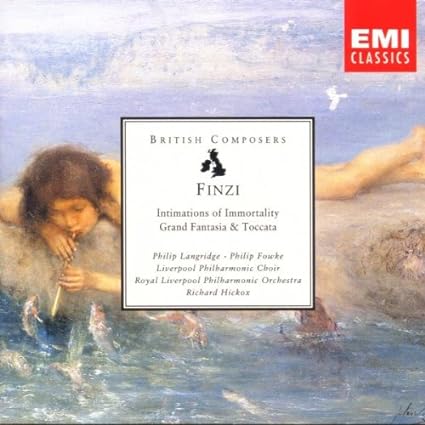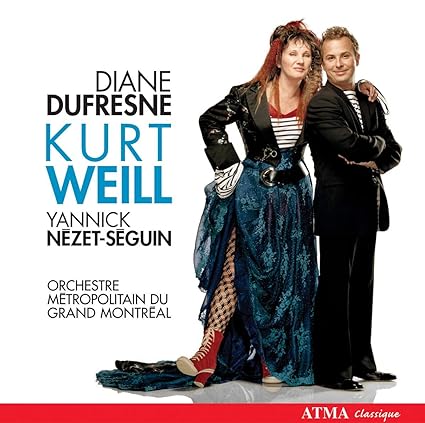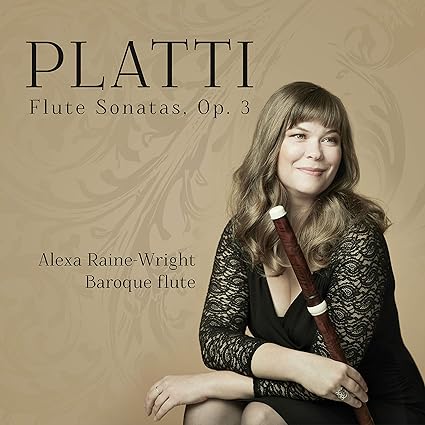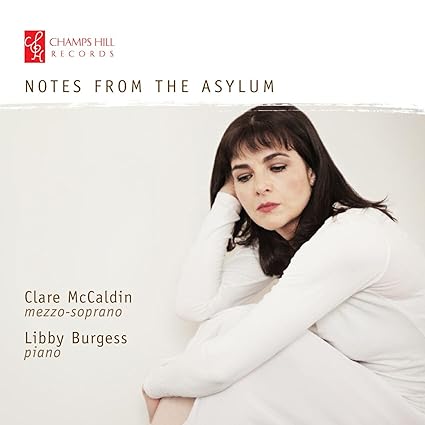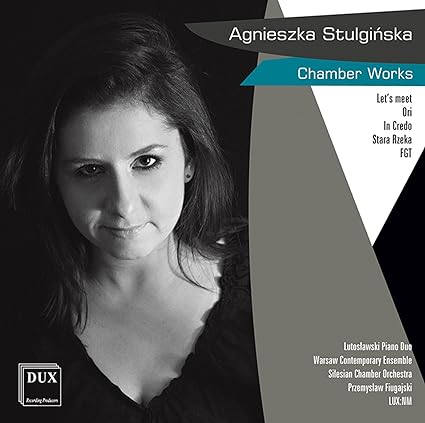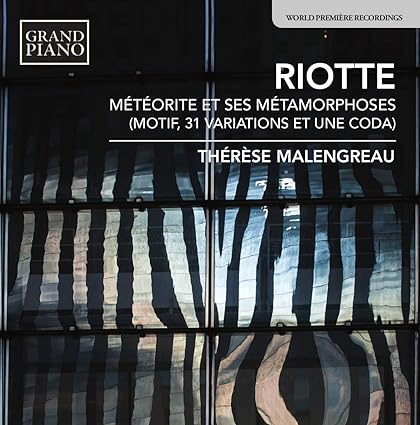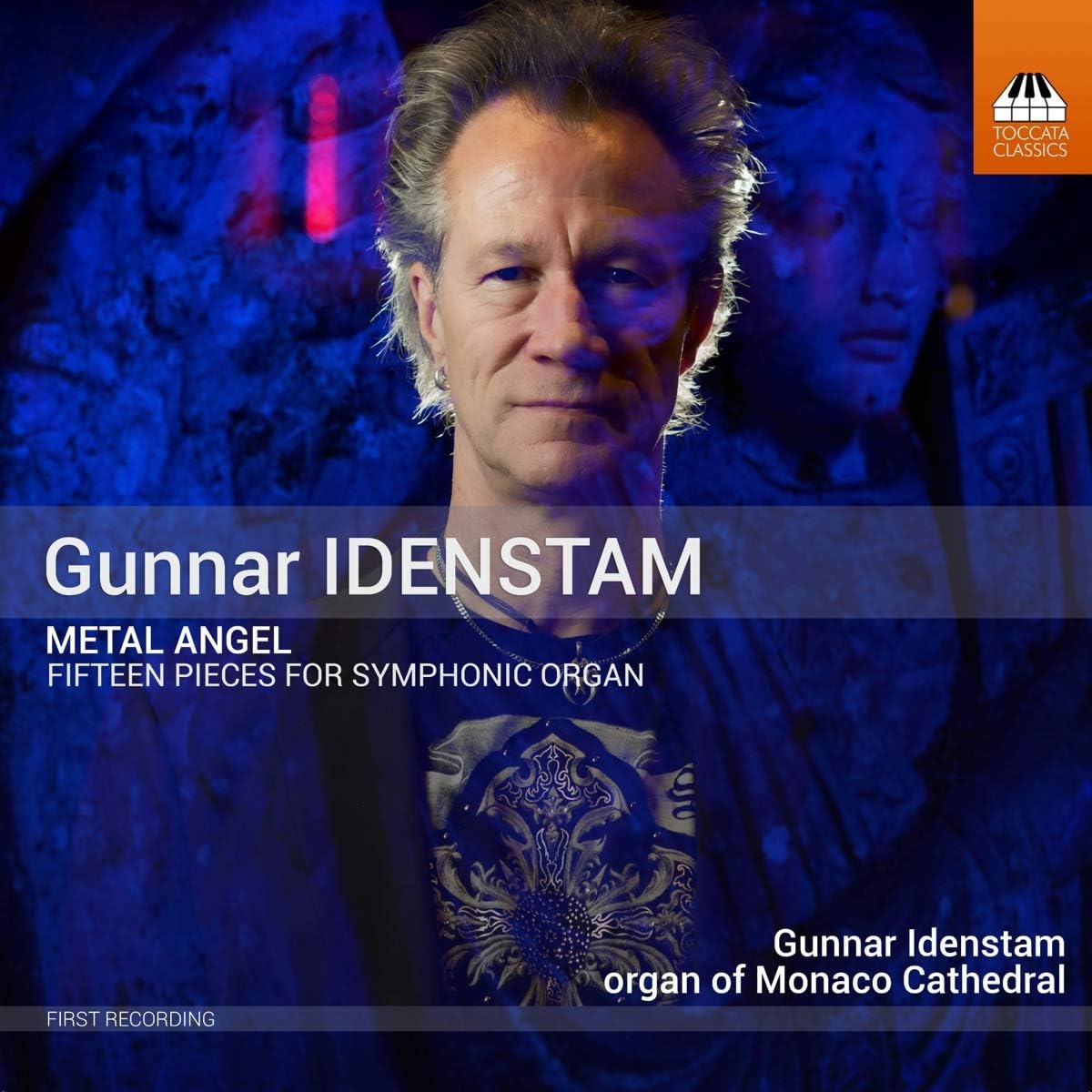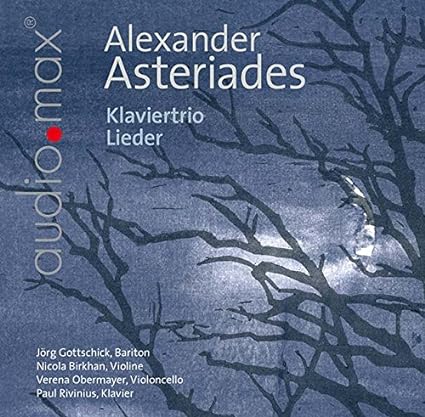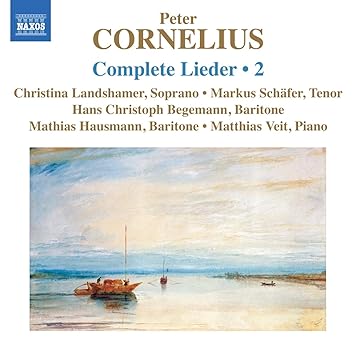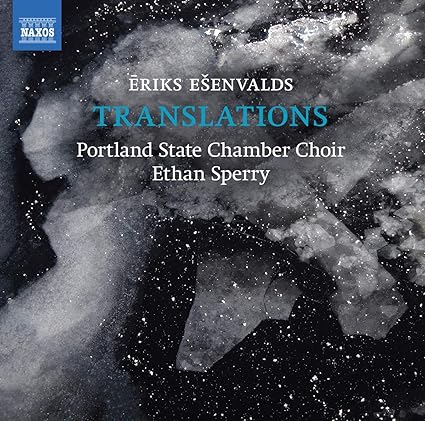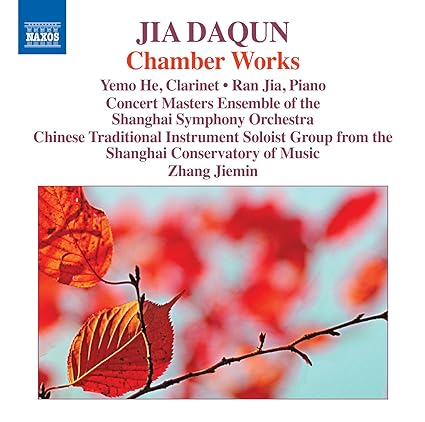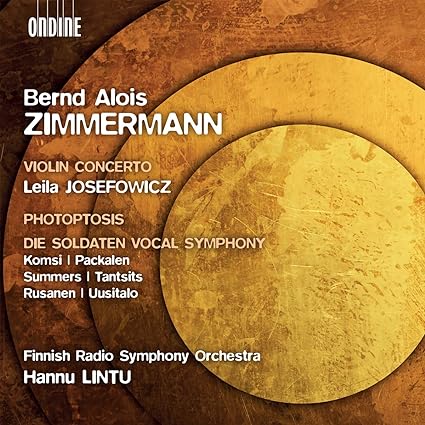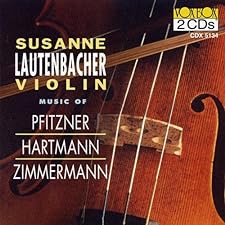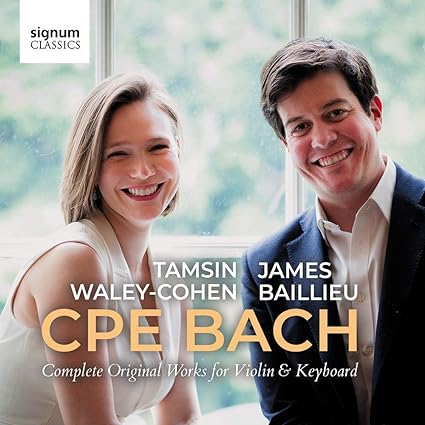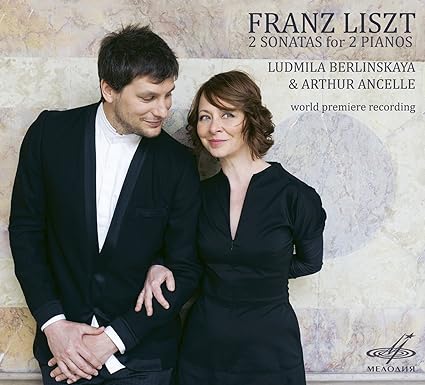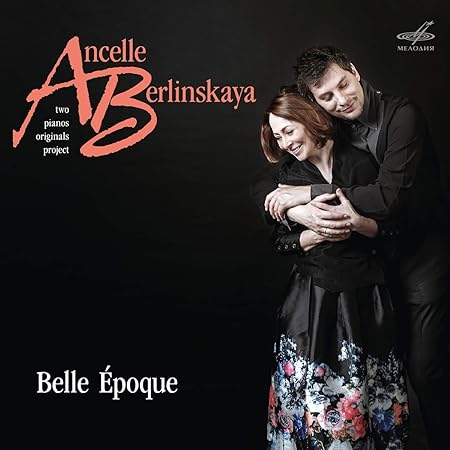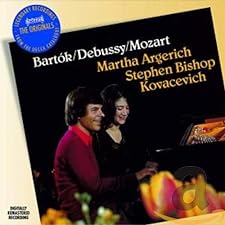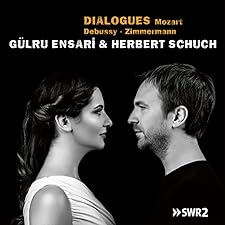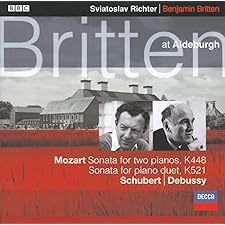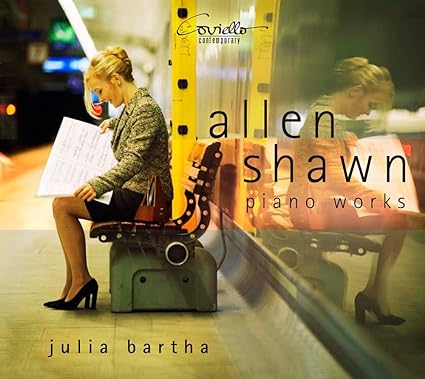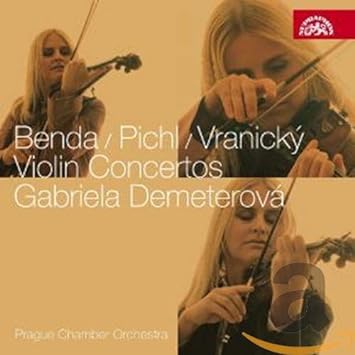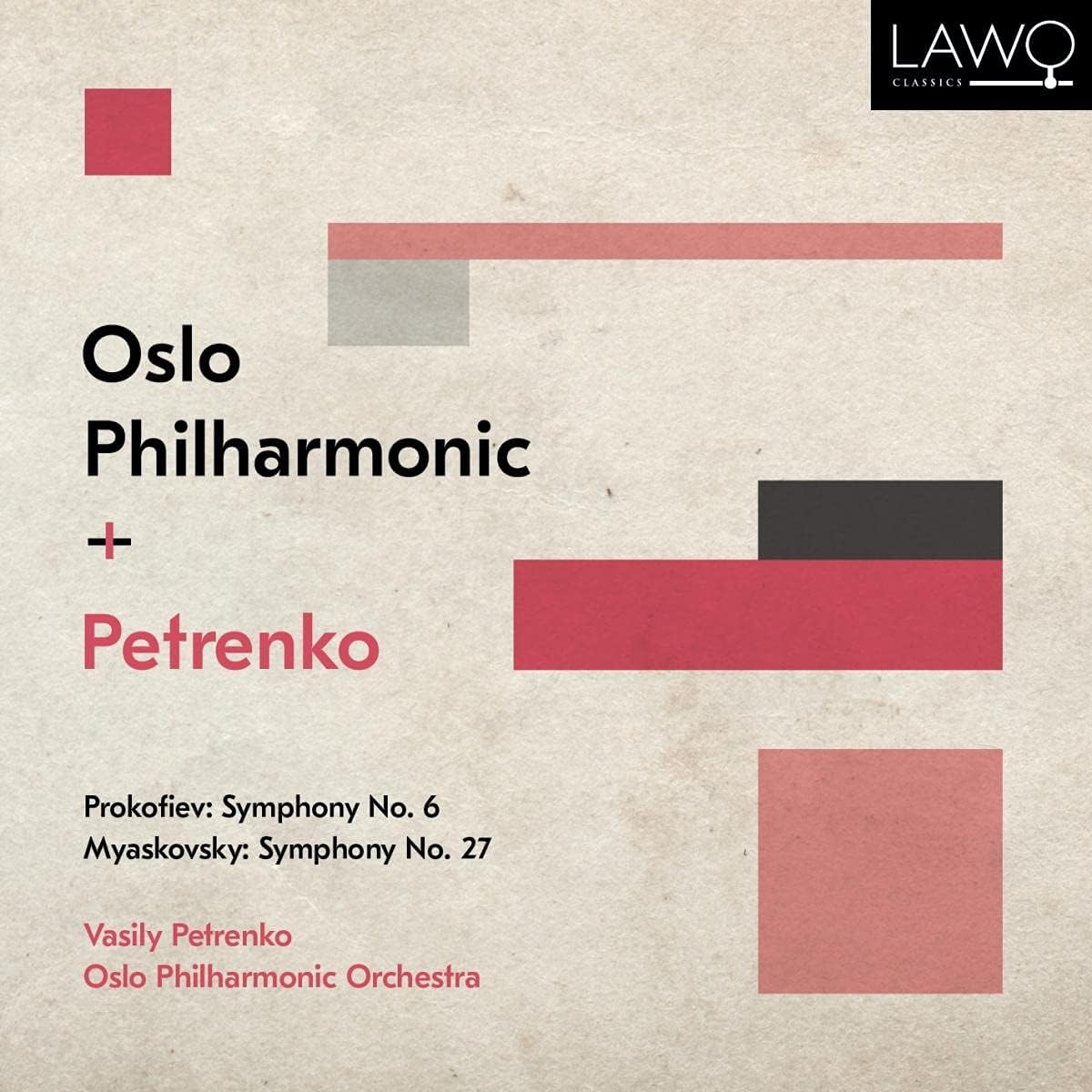The Ancelle-Berlinskaya duo's Liszt 'n' Saint-Saëns ditty was so nifty that this collection of French works entitled
Belle Époque should certainly be worth hearing, I thought. OK, both were bargain basement priced, so it seemed a simple decision to buy both. Since only the Debussy was known to me, it also offered a fine chance to hear potentially choice new things.
Cécile Chaminade's
Valse carnavalesque starts off the disc, and the brief work glitters and swirls and contains nice hints of a waltz-like lilt in a few places, and as performed and recorded has a bit of lower register weight underpinning the lighter fare. It's fair to write it offers a delightful Chabrieresque opening - and that is most certainly a good thing. Charles Koechlin's Suite for two pianos follows, and it sounds gentle and tuneful and lovely, very centered on limpid melody. Quite impressively, these traits dominate the opening Andantino, only to become more pronounced yet in the Andantino con moto. It's ridiculous. The piece does swell in scale and energy in the closing movement, though it never sheds its focus on beauty. Louis Aubert's
Suite Brève receives it world premiere recording here, and it comes off as souped-up salon music, dance inspired trifles turned into something aurally weightier yet unyieldingly charming. It also sounds like a Chabrier-Ravel hybrid, which turns out to be something the world needs.
Reynaldo Hahn's
Le ruban dénoué follows, and it forms the core of the disc. While ostensibly twelve waltzes, the opening
Décrets indolents du hasard sounds so ridiculously beautiful and enchantingly languid, that any notion of a waltz is more or less imaginary. Something similar happens in the third piece,
Souvenir...avenir..., where one hears Johann Strauss as more of something dreamt about. There are some nice contrasts in tempo and style between the first four pieces, but then the end of the fourth just blends seamless right into
Le demi-sommeil embaumé. A couple tracks later
Danse du doute et de l'espérance and then
La cage ouverte offer something springier, more energetic, and more waltzy, but the melodic beauty moves rather past something like those written by futzy old Austrians. Ancelle and Berlinskaya draw out
Le seul amour to over six miuntes, which takes its innate beauty and hypnotic quality to a most satisfying level. This is a corker of a piece. Now that I've heard the work, I must hear another take, and I have my eye on the one from Huseyin Sermet and Kun Woo Paik.
The disc rounds out with a much better known work, at least for me, in the form of Debussy's
En blanc et noir. This offered as good an opportunity as any to perform some comparative listening. The duo starts off with an Avec emportement imbued with a rather vibrant feel, which contrasts nicely with the slow, somber, almost heavy Lent. The duo create some nice basically super-legato sound in the Scherzando, creating a lovely, shimmering musical surface.
Mr and Mrs Casadesus offer an even more potent Avec emportement, with the duo slightly desynchronized for effect, before moving on to a more serious Lent that contains even broader dynamic contrasts, and it ends with a lighter, cleaner sounding Scherzando. They've got the music down cold. Mr Richter and Mr Britten go for a comparatively leisurely opening Avec emportement which sounds spontaneous but not as well coordinated as the studio efforts. The slower than average Lent stretches the musical line to the point of breaking, the dynamic contrasts are not so hot, and the whole thing kind of just moves along slowly but not impactfully. The Scherzando comes off probably best of all, though one of the pianists seems less steady than the other. I don't think this will be a top four choice going forward. Mr and Mrs Kovacevich imbue ample energy in their opening Avec emportement, but they also, aided by fine major label recorded sound, offer much gentler and more nuanced playing than one may typically expect from
this pairing. The Lent, taken at a slow overall tempo to almost exaggerate contrasts, has very nice momentary effects, and the Scherzando comes off swift yet light. The whole piece ends up sounding less coherent and more about really nifty moments, though. Mr and Mrs Schuch, benefitting from basically SOTA sound, take the opening movement at a well-judged clip, and they deliver something more flexible, more fluid in terms of tempo changes and less effortful in terms of dynamics. Of particular interest are the widely divergent dynamics between pianists. And I will surmise that it is Mr Schuch who delivers the more finely nuanced upper register rubato. (I could be wrong.) The Lent stretches the line wonderfully, and displays the benefits of two pianists playing with finely honed dynamics, and the duo make sure to deliver an austere, hymn-like playing. The Scherzando, benefitting from some extremely fine digital dexterity, flits along, clearly demonstrating the influence of some of the composer's earlier works, and sound light yet weighty at once. Nice. So in this work, the Casadesuses and Schuchs deliver equally compelling, if stylistically different takes. The Ancelle-Berlinskaya duo make for a fine addition to my small but still growing collection of the work.
Only sonics detract from the Ancelle-Berlinskaya recording. Distant, efficient, and metallic, it could have benefitted from some better Steinways or Bechsteins in a proper, high end studio paired with mixing desk tomfoolery, which would have accentuated beauty even more.
